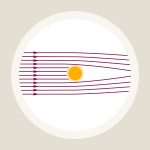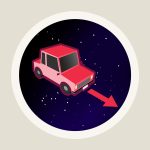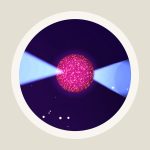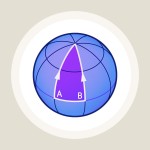Chirping neutron stars
For some gravitational wave signals, one can go beyond graphs and animations – they can be made audible
An article by Markus Pössel
In a number of ways, the gravitational waves reaching us from astronomical objects are more similar to an orchestral sound than to a picture. For instance, the waves reaching us from a pair of orbiting neutron stars is no incoherent mix of many different contributions, from which the detailed structure of the neutron star system could be gleaned, it is a harmonic combined wave, carrying information about the large-scale properties of the emission process.
The analogy between gravitational waves and sound can be taken even further: for some interesting waves, the frequencies are in the same range as those of the sound waves we can actually hear. These gravitational wave signals, we can thus “translate” into sound waves, imprinting their frequencies, strength and time evolution onto sound waves, making certain cosmic processes audible in the process.
Objects orbiting each other
The best example has already been mentioned: two neutron stars orbiting around each other. Radiating gravitational waves, such a binary experiences a constant loss of energy. In reacting to this loss, the neutron stars come closer and closer, corresponding to an ever shrinking orbital period and ever higher gravitational wave frequencies (the oscillation period of the gravitational waves is half the orbital period). As the neutron stars gain speed, their gravitational wave production increases, leading to further energy loss and further speed-up, a run-away process that ends only when the neutron stars finally merge. Before the end, both the frequency of the gravitational waves and their strength increases rapidly, as shown in the following graph:
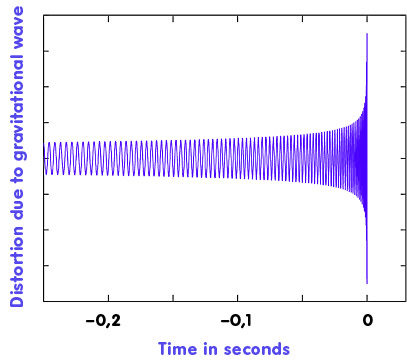
The deviation of the blue line from the central horizontal is a measure for the strength of the space distortion associated with the gravitational wave. The increase in frequency corresponds to the crests and troughs of the blue curve following each other at ever shorter intervals as one moves to the right, and at the same time, the strength of the gravitational wave increases as well.
“Hearing” gravitational waves
Translated to sound waves, this process corresponds to a kind of chirp – a note that starts soft and low and then increases in pitch and volume. The following MP3 file contains such a chirp of merging neutron stars:
Play [MP3, 71 kB], Download [ZIP, 38kB]
[© B. Owen, Penn State University]
Astrophysicists would dearly love to detect such a chirp. The exact time evolution of the chirp contains information about the strength of the gravitational waves emitted. Compared with the strength of the waves actually reaching us here on Earth, one could calculate the distance to the merging binary: the farther away the stars, the farther the wave has spread out in reaching us, and the more its strength is attenuated.
However, detecting chirps is a formidable technical challenge. The following audio files in MP3 format serve to illustrate this. The first one contains the signal of a neutron star orbiting a black hole, and finally merging with it:
Play [MP3, 88 kB], Download [ZIP, 40kB]
[© AEI/GEO600]
Here is the same cosmic tune, but this time together with all the noise swamping the gravitational wave signal in an interferometric gravitational wave detector such as GEO600:
Play [MP3, 187 kB], Download [ZIP, 183kB]
[© AEI/GEO600]
Only the very last phase of the merger, corresponding to the loudest and highest notes, can be distinguished in the noise.
Further Information
For background information on gravitational waves, check out Elementary Einstein, particularly the chapter Gravitational waves.
Related Spotlight topics on Einstein-Online can be found in the section Gravitational waves.
Colophon
is the managing scientist at Haus der Astronomie, the Center for Astronomy Education and Outreach in Heidelberg, and senior outreach scientist at the Max Planck Institute for Astronomy. He initiated Einstein Online.
Citation
Cite this article as:
Markus Pössel, “Chirping neutron stars” in: Einstein Online Band 01 (2005), 01-1013



